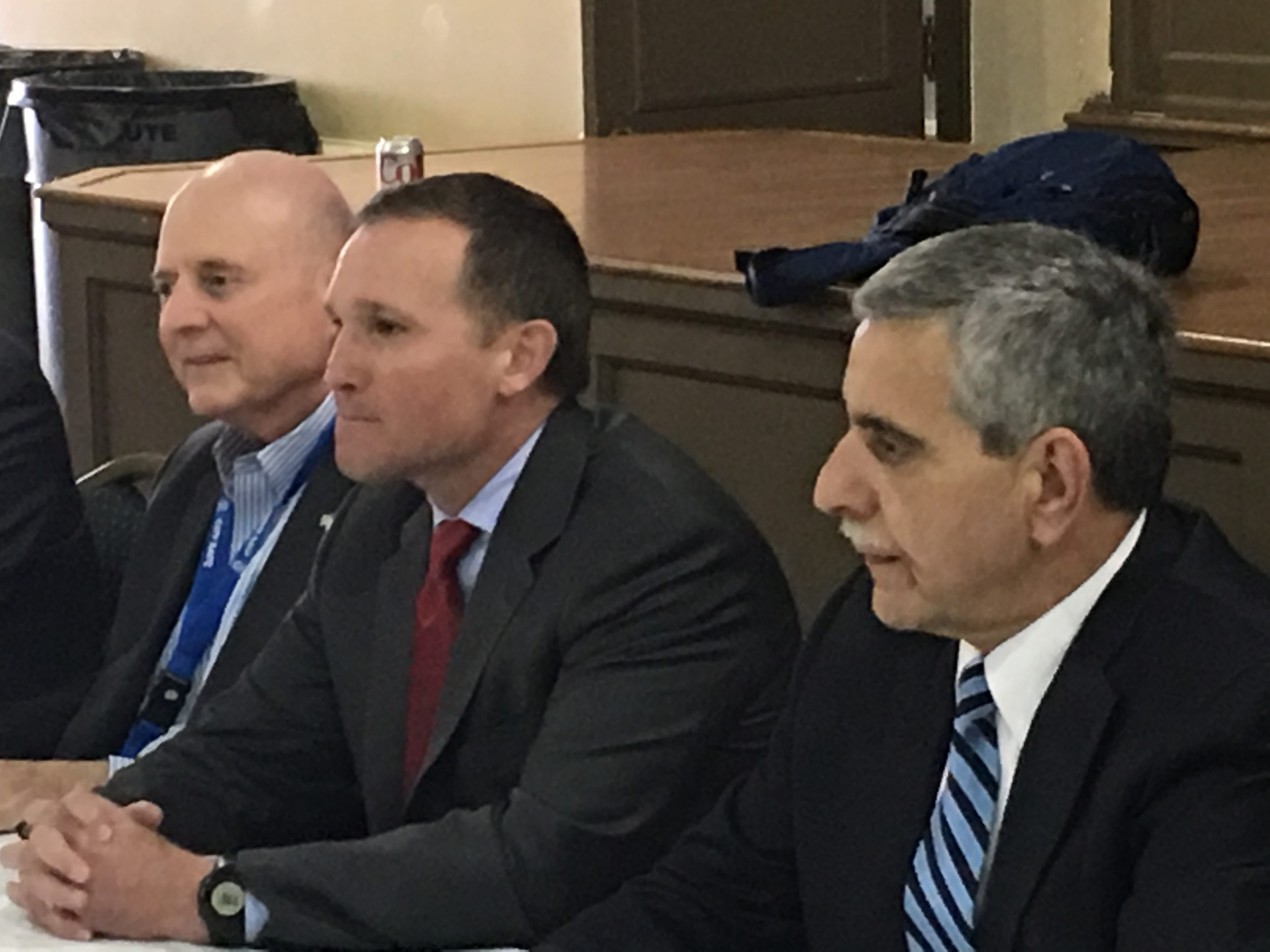
Mayor Lenny Curry offered his presentation of pension legislation on Thursday afternoon, leaving it to the Jacksonville City Council to hash out.
They were helped along by CFO Mike Weinstein and Chief Administrative Officer Sam Mousa, who helped to explain the pension situation to the legislators.
The short version: if pension reform passes, the city could see big savings: $1.4B in the next 14 years.
That will offer budget relief, even with raises factored in.
_____
Mousa noted, vis a vis the half-penny tax, that revenue has grown 4.49 percent per annum over the last seven years. Since the inception, revenue has grown 3.2 percent — including the recession.
Weinstein, meanwhile, discussed recent declines in payroll growth — under 1 percent for all classes of employees.
“We’re putting in fewer and fewer people, and giving fewer and fewer raises,” Weinstein said, with 1,000 fewer employees now compared to 2009.
Weinstein also outlined sales tax growth through 2060, with a 4.25 percent anticipated growth rate per annum.
While a “fluid process,” projections are for that revenue to top $500M by 2060 — with revenue in 2031 adding up to $155M.
“The statute allows it to go to 30 years or 100 percent funded, whichever comes first,” Weinstein noted.
Actuarial assumptions, Weinstein said, include 1.5 percent for general employees, police and fire, and 1.25 percent for corrections. Investment returns, meanwhile, are pegged at 7 percent growth per annum for police and fire, and 7.4 percent for corrections and general employees.
____
Weinstein also offered a distribution of the tax money to pay for unfunded liability costs of $2.861B.
The lion’s share –$1.8B — goes to the police and fire pension fund. The other 37 percent goes to general employees ($900M) and correctional workers ($159M).
Weinstein also outlined the hard costs of pension.
Right now, without reform, city pension costs are 119.6 percent of payroll. That number would go up to 149.7 percent without reform, and 88.2 percent with it.
“With DB programs,” Weinstein said, costs are “unknown.”
“It would be great if we were paying normal costs. But we’re not,” Weinstein said.
____
Weinstein then went on to outline the savings via the previous plans.
With general employees, $25M of savings could be realized next FY.
In FY 31, Weinstein said, “we make a contribution and the cash comes in,” referring to tax proceeds.
Because of the money coming in, the city is insulated from the kind of crippling costs that effect current budgets.
Weinstein showed similar trending for corrections throughout the span of the amortization, before describing the PFPF relief.
“It’s a $250M difference for PFPF,” Weinstein said. “When you compare reform to not doing anything, it’s huge.”
How huge?
The city could save $82M in FY 18 .. pending reform. “A true savings in cash.”
“The difference in cash payout is $1.4B in 14 years,” Weinstein said, with the half-penny helping to absorb costs increases in the 2030s and 2040s.
Savings fluctuate over the years: $82M in FY18, $83M in FY 19, $74M in FY 20.
_____
Pay raises — the factor that sold the deal to the unions — will be substantial, adding up to $120M in costs by FY20.
That includes defined contribution increases.
All told, the city will still save $53M in FY18, $67M in FY 19, but then will come out $29M behind in FY 20.
The three years of raises will be covered with $29M left over, Weinstein said.
Meanwhile, the anticipated city contribution as a part of general fund revenue declines over the term of the scheme.
GF growth has been consumed by pension; with this plan, Weinstein said, reserves could be bolstered and new spending could be justified, via “payroll growth manageable throughout” the term of the plan.
____
From there, Weinstein went to liquidity ratios: offering instant content for the TV reporters on hand.
Weinstein assured that, even if the impossible happened and no one was in the pension fund, the city would have five years of capital to pay off pension obligations.
“It’s a safeguard to lessen the concern people have that the funds won’t be financially sound,” the CFO asserted.
While neither the general employees or corrections funds are in danger of skirting the liquidity floor, the police and fire pension fund may require more capital — which the city would provide.
The city is committed to $180M of contributions no matter what, with $110M of that going to police and fire pensions.
“This minimum is just for the defined benefit plan,” Weinstein noted.



